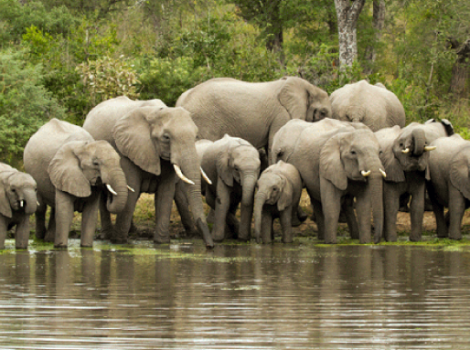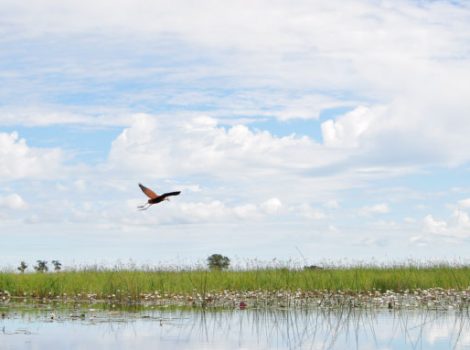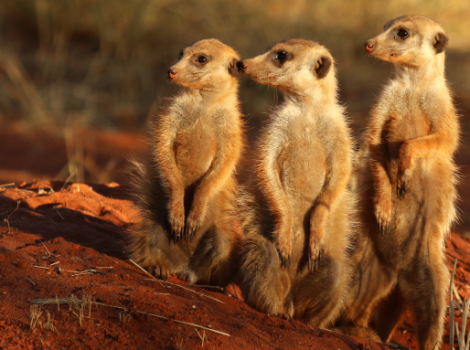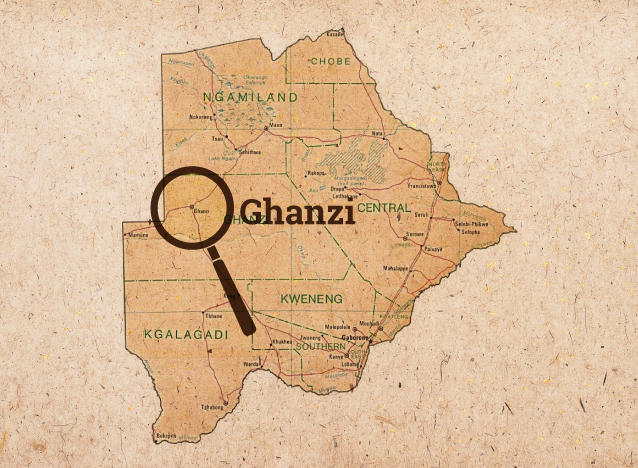
Gantsi (sometimes referred to as Ghanzi)
Population – Just over 12 000 (2011 census)
Location – Western Botswana and borders Namibia in the west and extends east into much of the interior of the country.
Airports 1 airstrip- there is currently no scheduled service, only charter and private operations.
Gantsi, home to the Kalahari Desert and the indisputably cute meerkats, may not be a bustling city, but it’s a growing town with good accommodation options and a handful of petrol stations and supermarkets. The town Gantsi sits atop a 500km-long low limestone ridge containing vast amounts of artesian water. Contrary to popular local belief; the name ‘Ghanzi’ is derived from the San word for a one-stringed musical instrument with a gourd soundbox, and not the Setswana word gantsi (a reference to flies).
Gantsi, the centre of a substantial cattle and game ranching industry, is situated on a limestone ridge; abundant with groundwater, and consists of a thriving community.
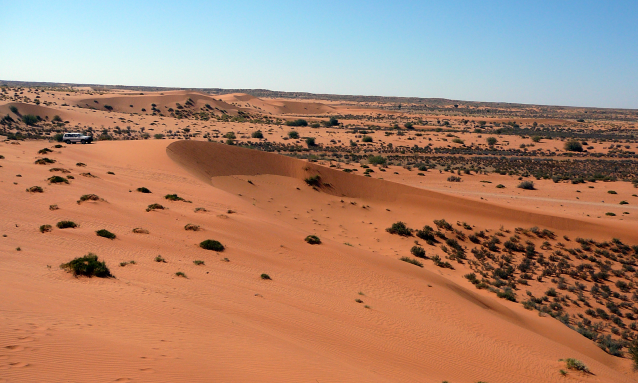
The Kalahari Desert – Gantsi’s claim to fame
Gantsi District’s claim to fame is that it is largely covered by the Kalahari Desert and is thus home to the devastatingly cute meerkats. The Kalahari Desert forms part of the huge sand basin that reaches from the Orange River up to Angola, in the west to Namibia and in the east to Zimbabwe.
Gantsi is the gateway to the Central Kalahari Game Reserve. Vegetation varies from scrub bush to savanna grassland interspersed with wide pans that attract wildlife. Among the wild animals visitors can expect to see are the lions, believed to be the biggest in size in Africa, and of course, the devastatingly cute meerkats!
Botswana’s farming capital
With well over 200 cattle farms all over the area, Gantsi is the centre of the cattle farming industry in Botswana. The cattle farms comprise approximately six percent of the national land and are backed one against the other in largely fenced holdings. Not surprising then that the main source of employment is on the cattle farms.
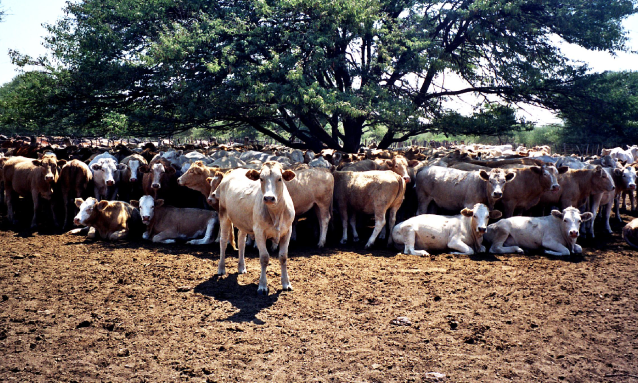
There are also several RAD (Remote Area Development) settlements in the area. These are part of a national program, which is designed to provide basic social services like schools, health facilities and training (in handicrafts, textiles, carpentry, dressmaking, livestock rearing and arable agriculture). Additionally, the program seeks to sensitise local communities of their political rights as citizens of Botswana. Settlements providing land and water were often first established by the Government to encourage RADs to settle near water sources. Several RAD projects exist in the Gantsi area.
Thanks to its production of the high quality, free ranging beef, this part of Botswana is regarded as one of the best cattle farming areas in the world. In fact, Gantsi farmers provide 75 percent of the beef that the Botswana Meat Commission (BMC) exports, primarily to the United Kingdom and the European Union (EU). Beef is the third largest industry in Botswana.
The people of Gantsi
The Gantsi community is a melting pot of various ethnic groups – not least the San, the first people of Botswana, Bakgalagadi and the Herero. The Gantsi area is also home to a community of Afrikaners, who first settled there in the late 1800s. Afrikaans is the lingua franca and as such, you’d be forgiven for thinking you’d stumbled into a South African region.
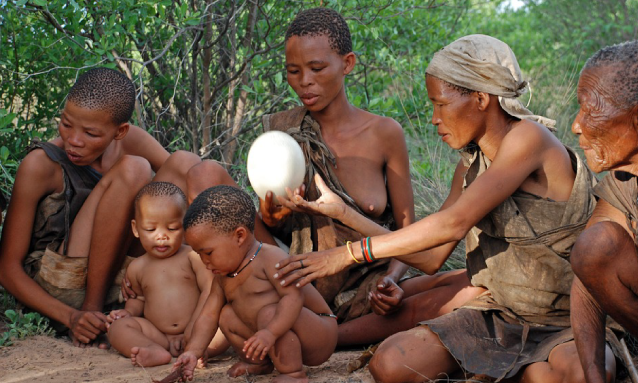
The San people, also known as Bushmen or Basarwa, are members of various Khoisan – speaking indigenous hunter-gatherers who represent the first group of Southern African people. Their origins span Botswana, Namibia, Angola, Zambia, Zimbabwe, Lesotho and South Africa.
The Central Kalahari Game Reserve
The vast Central Kalahari Game Reserve (CKGR) lies east of the extensive area of farmland. There is a 58 km buffer zone between the wildlife and the farms, and between the Kalahari Desert predators and livestock which is just sheer wilderness. Some cattle farmers have developed game ranches and wildlife concessions to which they attract tourists who make the journey to enjoy a spot of game viewing, excursions to the CKGR and desert walks with the San people, who share with guests their fascinating way of life.
Accommodation in the area ranges from basic to luxurious, catering for most budgets. Some lodges offer up-market accommodation in rondavels or chalets, while others are designed to give tourists the opportunity to experience the Kalahari hunter/gatherers’ traditional way of life. This means sleeping in basic grass huts, albeit with amenities.
A little history
The Bushmen or Basarwa as they are locally referred to, are known to be the very first inhabitants of the Kalahari Desert and indeed Botswana. The Bushmen perfected survival skills to survive in and live off the inhospitable land. Later the Bakgalagadi arrived and today live in villages in and around the Kalahari alongside other Batswana tribes.
The Bushmen, who were largely hunter-gatherers, were also later joined by the Hottentots, believed to have been cattle herders. The first white settlers arrived in 1874, led by Hendrik van Zyl, a flamboyant character whose legend still persists in Gantsi, as does the remains of his once palatial house. More white settlers arrived in the late 1890s. The new arrivals were Boer trekkers, who were fleeing South Africa with hopes of establishing an independent republic deep within the Kalahari wilderness.
The first group of trekkers, however, exploited game and other resources in the area before moving on. The next lot to arrive in the early 1900s were committed to cattle ranching and set up home in the area. By 1936 there were over 40 farms.
Modern Gantsi
Gantsi is now a far cry from the Gantsi of old, which amounted to little more than a dusty ‘little settlement’ that time seemed to have forgotten owing to its distinct lack of developments. However, it now boasts a tarred road, basic amenities such as running water and electricity, banks and more than one shopping centre. There is also a hospital as well as clinics. Visitors to Gantsi and the Greater Gantsi area will be spoilt for choice as far as accommodation is concerned. It may not have a thriving nightlife in terms of nightclubs, but there is more than one safari lodge at which to hang out, have a good meal and socialise.
Gantsi may seem to some to be in the middle of nowhere but it’s very strategically placed to allow for easy travel to different interesting places!
275 km / 171 miles from Maun
540 km / 335 miles from Windhoek
636 km / 395 mile from Gaborone]
For those who want to have a bit more fun, Maun is also only a few hours drive from Gantsi. Namibia is just across the border, while Gaborone is also within easy reach.
Did you enjoy this article? Are you from Gantsi? What interesting facts about Gantsi would you like to share with the world? Please either share your comments and/or share this article.
Reference: Botswana Tourism, wikepedia
Picture sources: Kalahari Desert – mustseeplaces.eu / The San people – Aino Tuominen

